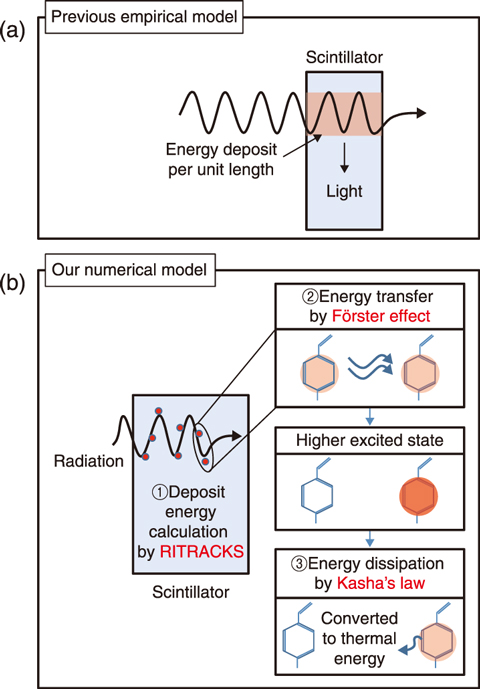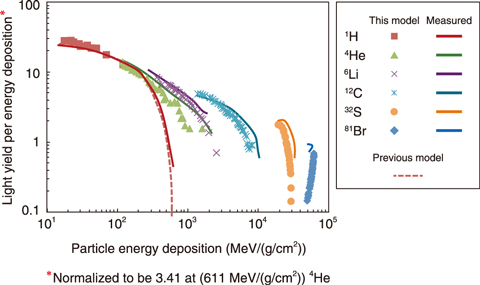
Fig.4-9 Schematic of the developed scintillation light yield prediction model

Fig.4-10 Light yield and energy deposited by ions
Scintillation detectors, which convert radiation to photons, are widely used to measure photons, neutrons, and their dose owing to their efficiency and low cost. Moreover, scintillation detectors can be used to measure the energy of radiation because the scintillation light yield is approximately proportional to the deposited energy. However, as the light yield from protons and ions, which are important for accelerators, space development, and medical applications, depends not only on the energy deposition but also on the particle species, the dose cannot be evaluated from the light yields alone. It is therefore necessary to clarify the relationship between the energy deposition and resulted light yields based on the scintillation light production mechanism.
Based on the assumption that the light yield suppression depends on the energy deposition and its topological arrangement, a numerical model composed of three procedures was developed, as shown in Fig.4-9(b): ① incoming radiation deposits its energy to the scintillator, ② deposited energy is transferred between the molecules, and ③ the transferred energy is dissipated as heat by the transition between excited states. In step ①, the spatial arrangement of the energy deposited by incoming radiation was simulated using a track-structure calculation code RITRACKS, originally developed for radiation biology studies, taking into account the particle dependence of the energy deposition distribution. The energy transfer between the molecules in step ② was calculated based on the Forster resonance energy transfer. In step ③, the excitation energy given to a molecule more than once, which is often the case for heavy projectiles depositing energy in high density, was dissipated as heat, rather than light, in accordance with Kasha’s law.
The developed numerical model was then applied to general-purpose scintillators to calculate the light yield by α-rays, β-rays, γ-rays, protons, and heavy ions. The calculated results, shown in Fig.4-10, agreed well with experimental data. Moreover, the mechanism that suppresses the light yield, particularly strong for protons and heavy ions, was explained by this model.
The developed model may be useful for scintillator-based detection of protons and heavy ions in accelerators, space development, and medical treatments, as well as for the development of new scintillation detectors, for example, which can specify the particle species and the energy based on the output of detector complex.